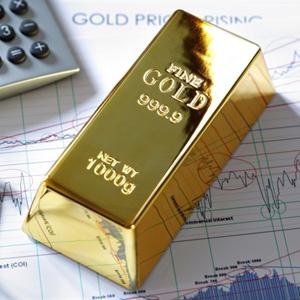 If you are considering gold as an investment, or you have a bunch of old jewelry sitting around that you’re planning to get rid of, it would be a great idea to learn as much as you can about how gold is valued, and keep an eye on the current rate of gold so you can make a good investment or get the most out of your old treasures.
If you are considering gold as an investment, or you have a bunch of old jewelry sitting around that you’re planning to get rid of, it would be a great idea to learn as much as you can about how gold is valued, and keep an eye on the current rate of gold so you can make a good investment or get the most out of your old treasures.Gold in History
Looking back, gold has been used throughout history as both a currency in and of itself and also a standard that saw the value of currencies set in accordance with the current rate of gold. The “gold standard,” as it was called, was in place in many countries throughout the world by the end of the 19th century but was abandoned by many during the financial crises that surrounded World War I. This system was in place until about 1971 when, under Nixon the United States abandoned the gold standard in favour of a fiat currency system.
From 1919 onwards, the standard for the current rate of gold has been set by the London gold fixing. A twice-daily telephone meeting of representatives, from five bullion trading firms, on the London bullion market.
Since 1970, the current rate of gold has grown and shrunk exponentially, from $37 US per troy ounce in 1970 to $590 in 190, down to $273 in 2000 and then way up to $1,410 in 2010, and a further all-time high in August 2011 of $1908 at the London Gold Fixing. As of Nov. 19, 2013 the London Gold Fixing had the current rate of gold pegged at $1276.50 USD.
Supply and Demand
You might ask, what is it that causes the current rate of gold to rise and fall? Like most any commodity, supply and demand is a major factor, along with commodity speculation – which involves investors making risky transactions in an effort to make profit from short or medium-term changes in the value of goods, such as gold.
But unlike most commodities, saving and disposal rather than consumption affect the current rate of gold. Because most of the gold that has ever been mined still exists in easily accessible forms such as bullion or jewelry that is valued mainly by it weight, gold can be put back on the market at any time for the right price. As of the end of 2006, the total amount of gold that has been mined on Earth totaled 156,000 long tons, and because this amount is significantly higher than the annual production from mines (supply), the price of gold is largely affected by changes in demand from buyers rather than annual supply.
Central banks in countries around the world as well as the International Monetary Fund have a significant influence on the current rate of gold. As of 2004 central banks and official organizations owned 19 per cent of all above-ground gold as official gold reserves, and are some of the world’s largest purchasers of gold. As a result of this, interest rates are closely related to the price of gold, and changes in interest rates often signal changes in the current rate of gold.
Hedge Funds
Gold is also often used as a hedge – a way to offset potential losses – against inflation, deflation or currency devaluation. In difficult financial times, when investors see smaller returns on bonds, equities and real estate, the demand for gold and other commodities tends to increase.
Other factors affecting the current rate of gold include jewelry and industrial demand which has fluctuated in recent years, short selling by futures traders, and situations of war, invasion and national emergency.
If the current rate of gold is looking favorable and you’re ready to invest, there are many ways to do so, including: buying bars or coins, exchange-traded products, certificates, accounts, derivatives, CFDs and spread betting or mining companies.
An important thing to keep in mind is that gold investment is a frequent target for fraud. Things to beware of include: cash for gold schemes, high-yield investment programs, advance fee fraud, gold dust sellers, counterfeit gold coins and shares in fraudulent mining companies with no gold reserves. So make sure you think twice before leaping at the great current rate of gold and spending your hard-earned money on a fraudulent investment.
About the Author:
This article was written by Jack O'Malley, who invests in precious metals, and is always keeping up with the current rate of gold ETFs and bullions.

